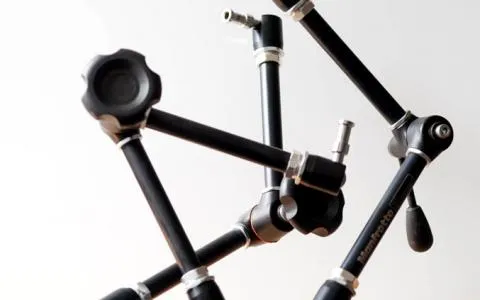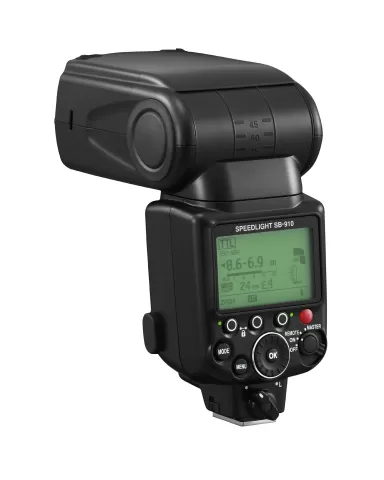I see these articles and videos all over the web, and like them. Despite claiming the opposite, we're obsessed with gear, aren't we? Here is my gear list.
This has changed quite a bit since it was written. First of all I have acquired much new gear, and secondly I don't carry a bag anymore.
I'm a Nikon shooter. I turned to Nikon from Minolta some years ago. Before that I had shot Minolta since my first ever camera—for more than 30 years actually. And I had been happy with Minolta, but after the Konica merger and then the the Sony takeover, I grew tired of the uncertain future and lack of third party gear, and decided to get what my best friends had: Nikon.
Below I'll list the stuff that I use regularly. It's not all in my bag of course. I actually go without a bag most of the time, oftentimes just bringing a body mounted with just one selected lens.
On longer trips I usually pack a bag for the purpose, and for my lighting gear, stands, reflectors etc., I have a large, flat plastic box that I have permanently packed with my strobist gear.
Bodies
I currently have three bodies, all DX-format. I have “standardized” on DX, and gotten to very good terms with crop factors and whatnot, and contrary to what many full frame shooters think, shooting DX is not a stage on the way to FX. I for one am no FX wannabee. I'll stick to DX as it is. My lineup consists of:
D300s w/grip: I acquired this latest DX-body as a replacement for the D200, and it's doing a great job as my main body. Great IQ, great controls, great display. A real performer.
D5100: I acquired this body primarily to do video, and have already done some and loved it. But I use the D5100 for stills quite a lot, not least thanks to the articulated screen, which makes it a very good camera to use on a tripod.
D200 w/grip: This was my first ever Nikon body, and is still ticking along with some 30,000 clicks in its belly. I often use it as a “compact” camera without the grip.
D40: I bought this used as a backup before a vacation, and just love that little gem! Light, easy to use and with an amazing image quality in its 6 megapixels.
Fuji X100: This is definitely my new camera love! I have shot a ton of images with it since I got it, and use it way more than any of my SLR's. It's simply a perfect camera to carry and it takes some great pictures.
Canon Powershot D10: This hardly qualifies as a body, but I always carry a compact camera, and the Canon Powershots have been my favorites for a long time. This is shock- and waterproof, which makes it perfect for me.
Lenses
Oh, man! Where to start? Even though I'm no Bjørn Rørslett, I have collected quite a few lenses already, and ever so often I feel the urge for more, so I expect the collection to grow. I like good glass, and consider it the best investment you can make as a photographer. Pro grade zooms and bright primes is my weakness. And oddball lenses too. I like having fun.
Listed shortest focal length first:
Nikon 10.5mm f/2.8 fisheye: A fun lens that takes some great images. Not used too often, but nice to have for the effect and very wide angle.
Sigma 10-20mm f/3.5-4.5: My go-to wideangle zoom. A really, really great lens on a DX-body. Severely beat up at this time, but still working as it should.
Nikon 17-55mm f/2.8: The workhorse. A stunningly good lens and a real all round piece of glass.
Sigma 20mm f/1.8: My newly found lens love. Wide enough to be fun and bright too, delivering an excellent image quality.
Sigma 30mm f/1.4: Much like a 50mm on full frame. A classical focal length, and f/1.4 and an impeccable image quality doesn't make it worse!
Nikon 35mm f/1.8G: A no brainer as I have said. Probably the most lens you can get for your money in the DX-lineup.
Nikon 40mm f/2.8 macro: Another one of those gotta-have lenses, which are so inexpensive and useful that it makes no sense not to buy it. An excellent macro with great magnification, but a lot less working distance than the 85mm macro mentioned below.
Nikon 45mm f/2.8 AI-P: A so called pancake lens and for a good reason. It's flat! Extremely compact, excellent build and image quality and manual focus. I always wanted one and found one used at a good price. It does nothing that I haven't got a lens that does already, but it's so darn cute!
Sigma 50mm f/1.4: A beast of a lens! Large, bright, sharp and able to produce some fantastic pictures. Great for portraits on DX.
Nikon 70-200mm f/2.8 VRII: It's almost needless to write about this one. Probably only surpassed by its newer replacement.
Nikon 85mm f/1.8D: I bought it used, and even though it's slightly longer on DX it's still perfect for portraits and a marvelous lens for very little money.
Nikon 85mm f/3.5 macro: The latest lens in my collection, and already a favorite. I'd love a little more brightness, but the 1:1 macro range and focal length makes it a very useful lens for my macro work.
Nikon TC 1.4: A classy teleconverter that does wonders on the 70-200.
As you'll notice, I have no kit lenses or wide range zoom lenses. I have shot with Nikon plastic kit lenses, the 18-55mm f/3.5-5.6, the 18-70mmf/3.5-4.5 as well as Nikon's famous 18-200 and Tokina's not quite as famous 18-270mm. None of these ever convinced me that kit lenses or do-it-all lenses are my cuppa. Some people love them. I don't.
Oddball lenses
Apart from the Nikon fisheye already mentioned above, I have also managed to get my hands on these:
LensBaby 3G (Muse): My first venture into the oddball lenses scene. Not easy to master, but a lot of fun! And inexpensive too.
LensBaby Composer w/single, double, plastic and pinhole optics: Odd lenses put into a very functional system. Much easier to control than the 3G and with a wealth of possibilities.
Arax/Photex tilt/shift 80mm f/2.8: A newly acquired lens and about the least expensive way you can get started on T/S. It's a fully manual lens, built like a tank, and good enough to get me going, albeit far from Nikon's own extremely expensive offerings.
Holga plastic: Plastic indeed. 38 grams of miserable quality, mechanical as well as optical.
Skink Pinhole: Another oddball lens, but a very good quality one. Made in Germany and with several options including a pinhole, a zone plate, a zone sieve and more. Very well made and able to take some eerie pictures.
Light
I have always loved working with flashes, and did off camera flash work even back when the flash was always attached to the camera with a wire.
2 x Nikon SB800: The old workhorse in the Nikon program. You can get very far with two of these babies. I sometimes borrow two more from a friend. Flashapalooza!
2 x Godox Propac PB820 external battery packs for the flashes. I was tired of charging small batteries, and these pack have juice for many, many shots at full power.
Orbis ringflash adapter: I love the ringflash look, and the Orbis delivers. I also use it for quite a bit of macro work.
Roundflash ringflash adapter: A newcomer. A collapsible softbox/ringflash from Poland. Large yet lightweight and not least compact when packed.
Interfit stands, umbrellas, Manfrotto brackets: For off camera work stands and softeners are a must. Have a small collection now.
Flash Waves wireless triggers: Sure I'd love to have Pocket Wizards or Radiopoppers, but my Korean Flash Waves have done a fine job whenever I have needed them.
Interfit reflectors: Bought a flip-out combo model with diffuser, black, gold, silver and whatnot. Nice kit, very handy and inexpensive too.
Other stuff
I tote around quite a lot of other things inside my bag as well as outside. The most used first:
Manfrotto 055B tripod: a sturdy and flexible tripod.
Markins M10-Q ballhead: Solid as a rock and still silky smooth.
Gitzo Explorer carbon tripod: a little akward in its mechanics, but light and stable.
Acratech Ultimate ballhead: neat and lightweight and very stable.
Giottos VH6011-658D Mini Video Head: A nice, lightweight but still sturdy dampened video head that I bought to use with the Nikon D5100. Great value for money.
Lots of Arca-Swiss brackets: This is the system that enables me to snap gear on and off the tripods quickly.
Manfrotto Magic Arm and Flex Arm w/Super Clamps: Arms that can clamp onto tube, edges, tripods, stands and much more. Can hold lamps, flashes, reflectors and even cameras.
Seagull angle finder: I could buy an Original Nikon, but this one works fine.
Strobies wireless release: I used to have a cheap Chinese gizmo, but this is nicer and much more stable.
The bag
I only have one bag that I use regularly:
Kata R-103: I got this bag a few years ago, and haven't looked further. I have had LowePro , Crumpler and other brands, which are all fine bags, but the Kata is my stopping point for now. Amazingly spacious and still very comfortable. It has a gazillion add-ons and flexible solutions, but I have stripped it down and use it as plain as possible all the time.
I loved the Crumplers for style and for their whole company philosophy, but I have to say that the Kata might be more boring, but it's a better bag than my Farmer's Double ever was and way, way better than the LowePro Mini Trekker that now holds my old Minolta gear.










